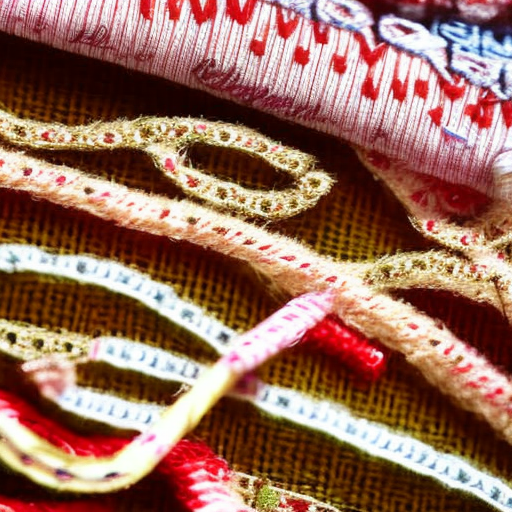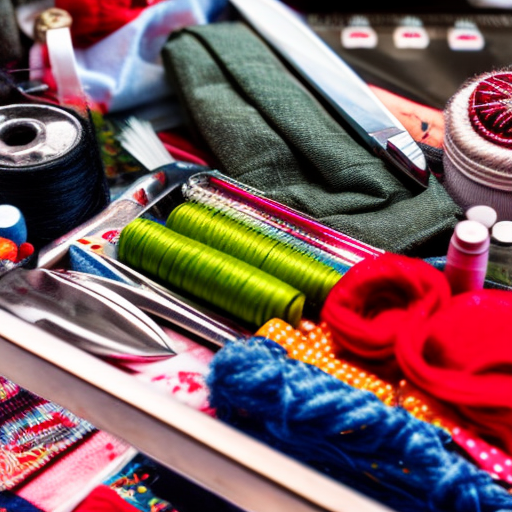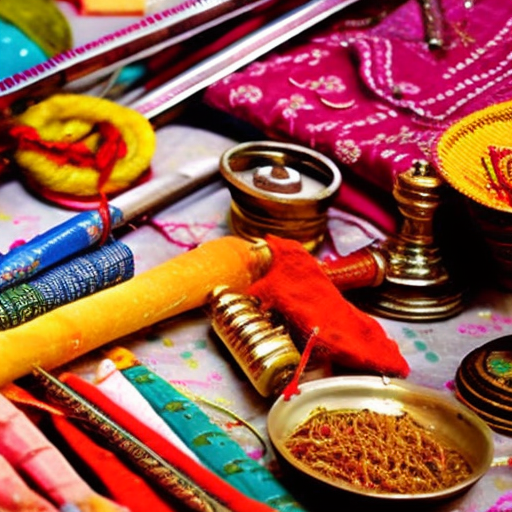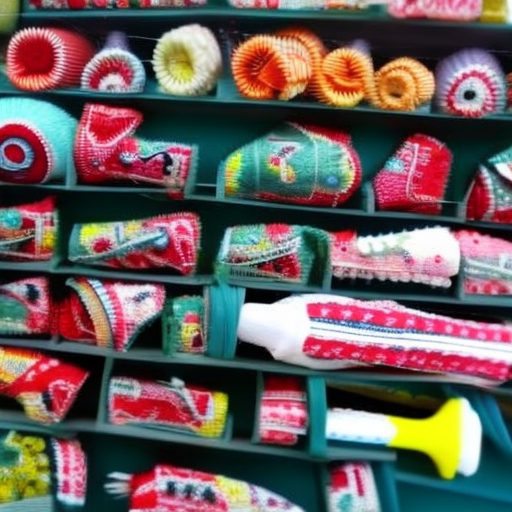
Have you ever wondered where the terms used for sewing notions originated? Here, we take a look at the fascinating history behind some commonly used terms in the world of sewing.
1. Needle
The word “needle” comes from the Old English word ”nǽdl,” which can be traced back to the Proto-Germanic word ”nathlą.” Needles have been used for thousands of years and have evolved from bone, bronze, and iron to the stainless steel or nickel-plated steel needles we use today.
2. Thread
The term “thread” has its origins in the Old English word “þrǽd.” It is derived from the Proto-Germanic word “þraida,” meaning a twisted or stretched wire. Threads are thin yarns composed of various fibers such as cotton, silk, or polyester, which are used for sewing, embroidery, or quilting.
3. Pin
The word “pin” can be traced back to the Old English word “pinn,” meaning a thin, pointed piece. In sewing, pins are essential for securing fabric and patterns together temporarily before stitching. They have been made from materials like bone, metal, and plastic throughout history.
4. Thimble
The term “thimble” has an interesting journey. It comes from the Old English word “þȳmel,” which is derived from the Proto-Germanic word “þumilo.” A thimble is a protective shield worn on the finger or thumb for pushing needles through the fabric while sewing by hand.
5. Seamstress
The word “seamstress” originated from the Old English word “seamestre,” meaning a woman who sews. Seamstresses traditionally worked in clothing workshops and were skilled in stitching garments, repairing tears, and creating intricate designs.
6. Bobbin
The term ”bobbin” comes from the Middle French word “bobine” or the Middle Dutch word “bobijn,” meaning a small cylinder or spool. Bobbins are used in sewing machines to hold and release the lower thread during stitching.
7. Notions
The word “notions” refers to small items or articles used in sewing, such as buttons, zippers, snaps, and ribbons. Its origin lies in the Latin word “notio,” meaning an idea or conception. Notions add functionality and decorative elements to garments and other sewn projects.
8. Bias Tape
The term “bias tape” originated from the Old French word “biais,” meaning slanting or diagonal, as the tape is cut diagonally across the fabric. Bias tape is a narrow strip of fabric often used to neatly finish raw edges or create bindings for quilts, clothing, and accessories.
9. Hem
The word “hem” has its roots in the Old English word “hemmian,” which means to provide with a border or enclose. A hem is a finishing technique in which fabric edges are folded over and stitched to prevent fraying. It is commonly used to finish garments, tablecloths, and curtains.
10. Embroidery
The term “embroidery” originated from the Old French word “embrouder,” which means to decorate with needlework. Embroidery is a needlework technique that embellishes fabrics by stitching intricate designs, patterns, or images using various threads, beads, and sequins.
Next time you pick up your sewing tools, take a moment to appreciate the rich history and origins of the terms associated with your beloved sewing notions!





Fascinating! I had no idea!
Very interesting to learn about the origins of the term we use so often within sewing!